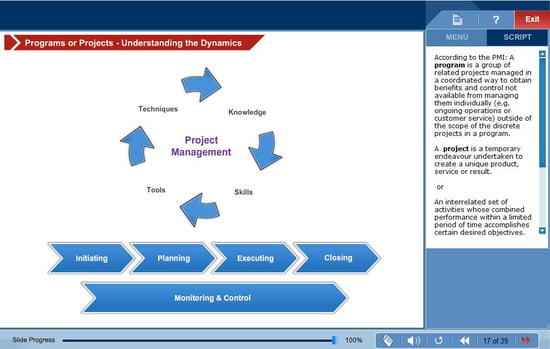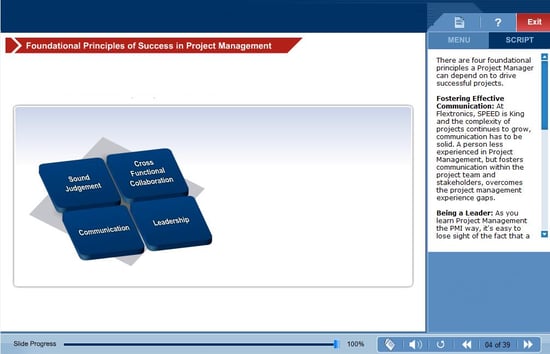Strategies of Audio Narration in Elearning

In my last blog, we discussed the guidelines to present audio in eLearning courses, based on the principles of Modality and Redundancy.
In this blog, I will share, based on my experience in instructional design present the different styles of audio narration.
There are 4 styles of audio narration. We will discuss each of them with examples.
→ Download Now: State of Learning (Now and Beyond) [eBook]
Style 1: Narration and Text are the same.
In this style, only part of the text is narrated.
It could be the introduction, summary or a part of the on-screen content, such as a calculation or a process. It is specifically used to give instructions to attempt exercises.
This approach also serves to break monotony and aligns well with instructional design principles by maintaining consistency.

Style 2: Part of the text being narrated
In this style, a gist of the on-screen text is narrated.
Though this style eliminates redundancy, it increases the risk of cognitive overload. Studies suggest that congruent material aid comprehension and learning, while incongruent material hamper them. Making learners listen to a summarized version of what is not yet learnt, leads to confusion. ach also serves to break monotony.

Style 3: Narration different from the text
In this style, a gist of the on-screen text is narrated.
Though this style eliminates redundancy, it increases the risk of cognitive overload. Studies suggest that congruent material aid comprehension and learning, while incongruent material hamper them. Making learners listen to a summarized version of what is not yet learnt, leads to confusion. ach also serves to break monotony.

Style 4: Narration only, no Text
In this style, audio narration is combined with on-screen visuals or animations. Text is not visible on visiting the page.
This style is better suited to explain complex visuals or processes. It also enhances storytelling, when coupled with the right voice, tone and accent. Instructional design tools can help maximize the impact of this method.
This style can be effectively combined with Style 2.

I hope this blog was successful in presenting ideas for selecting the style of audio narration required based on your content.





